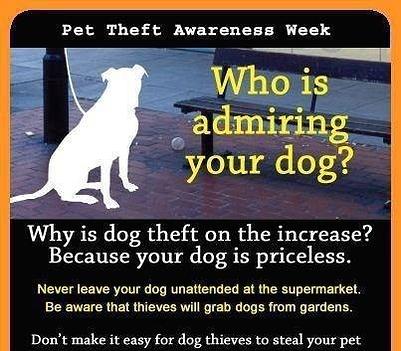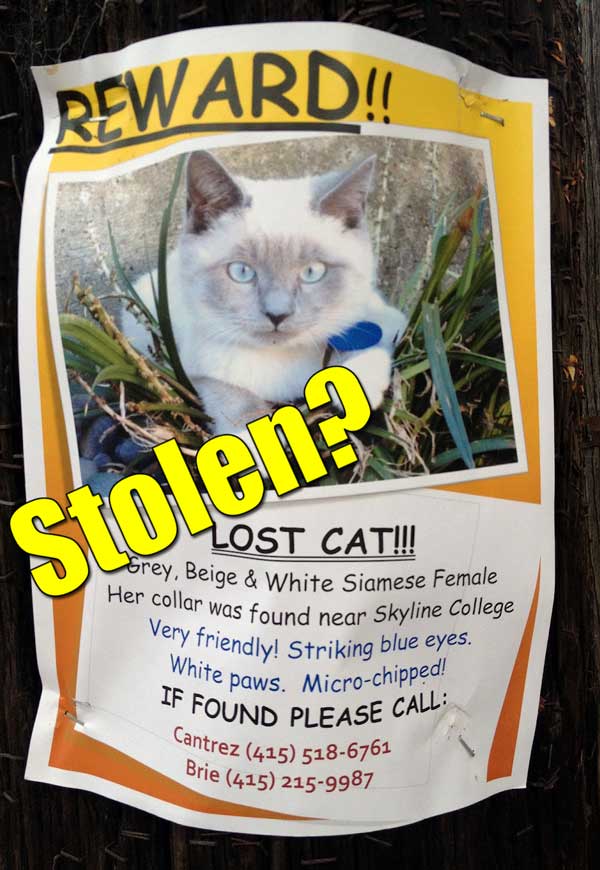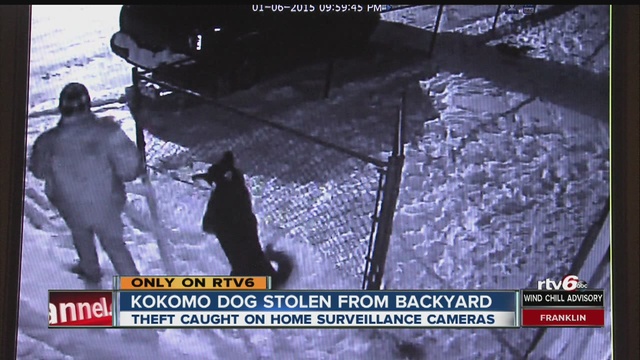This is one of the subjects that I need to write about, because anyone who doesn’t know any part of it, needs to know–and they need to make sure everyone they know reads it, too. This is an awful, sad subject. But don’t let it make you sad. Let it make you aware. Let it make you fiercely protective of your fur-babies.
And let it make you as angry as it made me.
From broad daylight to the dark of night, approximately two million pets are stolen every year in the US and about one million in Canada. Exact figures are not known, because police reports often don’t differentiate a stolen pet from missing property. But we do know that about 10 percent of dogs reported as missing are also reported as stolen.
They are taken from their yards, or picked up by thieves responding to “Free To A Good Home” ads. And by the way, “pound seizure” is still in effect in some animal shelters–so taking a pet you must relinquish there is not always a better outcome. Pound Seizure means animals not reclaimed or adopted are required by law to be turned over to laboratories for experimentation on demand. So some pounds sell animals to Class “B” dealers or research facilities.
Bunchers typically answer “Free To A Good Home” ads, to acquire animals in a bunch, and then sell the pets to Class “B” Dealers or tax funded research facilities. These researchers prefer to conduct experiments on pets and other animals that have lived with people, since they are usually docile and easy to handle.
Class “B” dealers are licensed to purchase and sell animals to research. The law has unfortunately allowed “B” Dealers to obtain animals for re-sale from other “B” dealers, shelters and from persons who have bred and raised the animals themselves. Investigations of “B” dealers have revealed:
- Live dogs in cages with dead dogs
- Dogs suffering from parvovirus, distemper, and rectal bleeding
- An open burial pit containing several dog carcasses in various states of decay
- Large dogs in cages with small dogs and female dogs in cages with male dogs, both violations of the Animal Welfare Act
- Live dogs eating dead dogs
Last Chance for Animals provided concrete evidence of bunchers by launching an undercover investigation of the dog dealer. The documentary Dealing Dogs was shown on HBO and appears below.
Others Ways Found Dogs Are Used
- Dog fighting
- Puppy mill breeding
- Held for ransom
- Meat for human consumption
- Meat for exotic animals
- Fur for clothing and accessories
- For sale in pet stores
- Ritual sacrifice for satanic cults
- Sadistic acts
Learning how to prevent pet theft, is just increasing awareness, in many cases:
- Keep your pet indoors when you are not at home. And be aware of what your pet is doing when out in your yard; it only takes a minute for thieves to steal your pet.
- Your pet should not roam free, for their own safety.
- Indoor cats live safer lives in general.
- Properly identify your pet with a collar, tag and microchip.
- Know where your pet is at all times.
- Maintain up-to-date licenses on your pets.
- Spay and neuter your pets for their health. Bonus: it makes them less likely to go astray.
- Be aware of strangers in the neighborhood and report anything unusual.
- When outdoors, dogs should be kept behind a pad-locked gate.
- If possible, make sure your pet is not visible from the street.
- Leash your pet when walking. This is a safety issue, as much as for control.
- Do not leave your pet tied outside stores to wait.
- Never leave an animal unattended in a car.
 MY PET IS Missing–WHAT DO I DO?
MY PET IS Missing–WHAT DO I DO?
Find a Good Home for Your Pet AND Protect Your Pet From Theft
- If you must use a Free to a Good Home ad, find out as much as possible about the adoptive home before sending your pet away.
- Interview the prospective adopters, visit their home, photocopy their picture i.d., record their drivers license number and license plate number, and check their references.
- Ask them about their prior pets, how they would care for and discipline your animal, and the name of their veterinarian.
- Ask the neighbors of potential adopters about the number of animals they have seen coming into and out of the adopters home and related questions.
- Have the adopter sign an adoption contract reviewed by a humane organization and pay an adoption fee.
- Do not allow potential adopters to take an animal from your home; always deliver the animal yourself.
- Ask a rescue group about how to conduct an adoption interview.
- Refuse to buy cut-price dogs without the right paperwork or adequate background checks.
- Adopt animals from shelters.
- Never buy from pet stores–some stores sell stolen pets!–or animals from puppy mills.
- Spay or neuter your animals. With so many animals available, dealers have no trouble filling their cages.
- Ask the U.S. Department of Agriculture to create and enforce regulations to stop pet theft. Write to Dan.Glickman@usda.gov
- If a stolen animal is positively identified in a dealer’s possession, report it to LCA and to USDA officials in your state; ask that the dealer’s records be inspected.
- Educate family, friends, and neighbors about pet theft and what they must do to keep their animals safe. Share this blog post about how to prevent pet theft!








